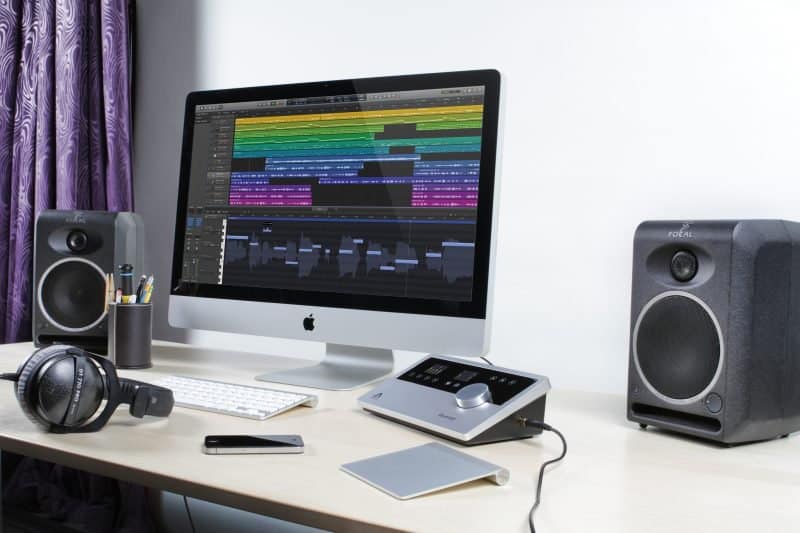
Automation – “telling” a program to do a certain thing at a certain time in a song. For example, automating a track to pan from left to right over the course of 4 bars. All major DAW’s have the capability to automate different parameters and plugins.
Auxiliary track (or Aux track)– A track that has no audio on it, but has audio being sent to it for processing.
Buffer size – How much data a computer program can handle at a time. Lower buffer sizes have lower latency, but are more susceptible to crashing. Higher buffer sizes have greater latency, but are less susceptible to crashing. The rule of thumb is to set your buffer size as low as possible when recording and as high as possible when mixing. This setting can be found in your DAW’s preferences.
Bus (or Buss) – The pathway along which an electrical signal flows. For example, the output of a DAW is referred to as the mix bus or stereo bus. The term is also used to describe an aux track with several tracks of the same instrument flowing into it. For example, if I set the output of each of my drum tracks to a single bus, than the aux track with that bus as the input is referred to as the Drum Bus.
Channel – Similar to a bus, a pathway through an audio device. For example, sound mixers have multiple input channels and output channels.
Clipping (or Peaking) – Another word for distorting. “Clipping” is usually used when a channel on a DAW or mixing board has too much volume being sent into it. In general, you want to give a channel enough headroom so that clipping doesn’t occur.
Comping – Combining several different takes of an instrument into one. Basically, copying the best parts of each recording and pasting them onto a single track, so that the performance of that instrument is the best it can be.
Crossfade – A specific type of fade where one sound fades in as another sound fades out. These are used when editing audio so that the transition between the two audio clips is smooth, rather than jarring.
Dithering – Adding white noise to a recording to reduce distortion when the recording is exported at a lower bit rate. Only used during the mastering process.
Dry sound – An unprocessed sound; a sound without an effect on it. The opposite of a wet sound.
Fade – The increase and decrease of volume at the beginning and end of a sound or a song.
Gain – This is a synonym for volume, though it’s often used as another word for distortion.
Gain Staging – This refers to 1) the process of making sure a recording is the same volume after a plugin as it was before, and 2) the process of making sure all of the recordings in a session are relatively the same volume.
Headroom – The amount of volume a channel can take before distorting. The louder the sound, the less headroom it has. For example, if a sound is peaking at -5dB, it has 5dB’s of headroom. If it’s peaking at -1dB, it has 1 dB of headroom.
Latency – The amount of delay between between the input and the output of a signal. Latency usually refers to the delay that occurs when someone tries to record something when there are too many plugins on the session. The input (the instrument) is delayed so that the output (the recording) is several milliseconds behind, causing an frustrating delay in a performer’s headphones.
Mix bus (or Submix, Stereo output, Mix output, or Master output) – The channel that all of the audio of a session flows to.
Mono – The opposite of stereo. A sound that has one source, rather than two.
Pan pot (or Pan knob) – A control that places a sound in the left speaker, the right speaker, or somewhere in between.
Plug-in – A piece of software used within a DAW that processes the sound of a recording.
Processors (or Sound processors) – any hardware or software that changes the pitch, speed, loudness, or tone of a sound.
Send – A routing function inside a DAW that allows you to send a copy of an audio file to an auxiliary track without affecting the sound of the original file.
Stereo – The opposite of mono. A sound that has two sources, rather than one. Creates the illusion of horizontal space in recordings.
Sweetening – The process of enhancing a sound of a recording.
Wet sound – A fully processed sound; a sound with only an effect on it. The opposite of a dry sound.
